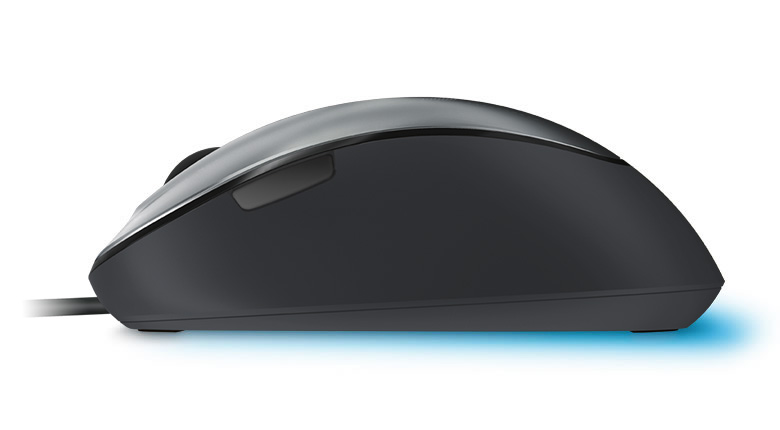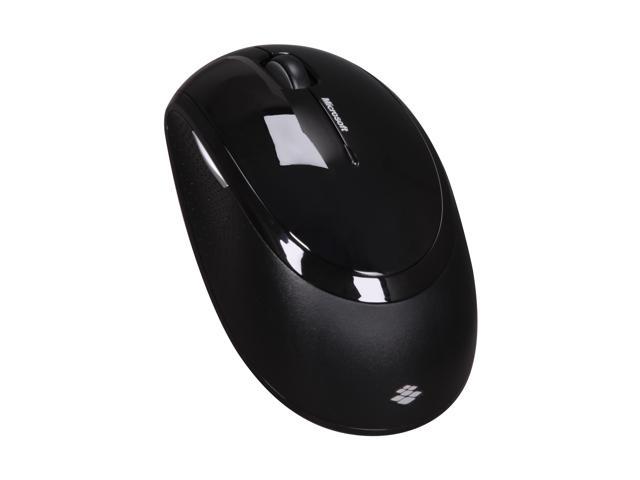Even though there’s a lot to love about the Mac, there is one thing that tends to trip up newbies: the hardware. Not the hardware inside the machine itself, but the peripherals atop your desk. I hateApple’s Magic Mouse.
Mouse that works. I had one of the Microsoft Comfort Mouse 4500 model before. So, I bought a second one through Amazon as the price is good. I've had no problems with it and it works flawlessly. The resolution is also very high using the blue laser. It doesn't lose tracking like the red laser. The Microsoft Mouse does everything that it is advertised to do. I only wish that the device were fully PS-2 compatible (with a USB to PS-2 cable adapter). It's level of quality is the reason that I chose it over other manufacturers. I always know that a Microsoft Hardware device will work with all X86 software.
Admittedly, part of my frustration comes from having 20+ years of Windows expectations locked into my fingers. But I’m not alone in this, as per this thread on MacRumors. Plus, the Magic Mouse is basically useless if you Boot Camp into Windows.
That’s why I use a third-party mouse on Mac. Fed up and thinking of doing the same? Here are several tips and tricks to help you get set up and comfortable.
Using a Third-Party Mouse on Mac
Microsoft Comfort Mouse 4500 Mac Driver Download
Modern Macs support nearly all USB and Bluetooth devices, so finding a compatible mouse shouldn’t be a problem. Even if the device is sold and marketed for Windows, the chance that it won’t work on your Mac is virtually zero, at least as far as basic features go: cursor tracking, button clicking, wheel scrolling.
If the mouse has special functionality, like buttons for window switching or changing system DPI settings, they probably won’t work properly on your Mac. That’s because those unconventional features require special manufacturer drivers that are usually only available for Windows.
Tweaking Basic Mouse Settings
Connecting a third-party mouse to your Mac is as simple as plugging it in if it’s a USB-connected mouse. For Bluetooth mice, first navigate to System Preferences > Bluetooth, then switch the mouse on (enable discovery mode if necessary). Wait until it’s discovered, then click Pair. That’s it!

Once the mouse is connected, navigate to System Preferences > Mouse to configure it. There aren’t many settings to change here, but it’s enough for the most basic of tweaks. (You’ll also notice a Set Up Bluetooth Mouse… button, which provides another way to pair new mice.)
- Tracking Speed: Determines the distance traveled by the cursor when you move the mouse (or in the case of a trackpad, when you move your fingers). The faster the speed, the faster the cursor will seem on screen.
- Scrolling Speed: Determines the amount of scrolling produced when you spin the scroll wheel (or in the case of a trackpad or Magic Mouse, when you swipe your fingers). The faster the speed, the more distance scrolled.
- Primary Mouse Button: Determines which of the two primary mouse buttons to count as the main button. Only relevant for left-handed users.
- Double-Click Speed: Determines how quickly two clicks must be in succession to be counted as a double-click. The faster the setting, the shorter the interval cut-off.
- Scroll Direction: Determines how to interpret scrolling motion. If unchecked, scrolling down will be interpreted as down. Otherwise, scrolling down will move upward, as per Windows.

There’s one more way to tweak your mouse settings without involving third-party software: System Preferences > Accessibility > Mouse & Trackpad. Here you can play around with the Mouse Keys feature of Mac, which allows you to move the cursor using a keyboard numpad.
What is spring-loading? If you drag and hold an item over a folder in Finder, eventually the folder will open, allowing you to keep dragging the item without letting go. Spring-loading delay determines how long you have to wait for the open to trigger.
Lastly, click Mouse Options… to open a panel where you can adjust scrolling speed.
Tweaking the Mouse With USB Overdrive
Feeling limited by the basic settings offered by Mac? Then consider installing USB Overdrive, a third-party app that offers precision tweaking. It costs $20, but you can use it for free indefinitely with a 10-second nag window that appears whenever you want to tweak.
Comfort Level
If this looks confusing to you, don’t worry. Let’s make some sense of it.
This section is a list of actions that USB Overdrive will perform. The 11 items you see in the screenshot are the default ones set up by the app when you first install it. You can add new actions and remove existing actions as you wish.
Click the plus “+” button to add a new action. USB Overdrive will wait for you to do something with your mouse (e.g. press an unusual button), then create a new action for it if it doesn’t already exist.
This section is a list of modifiers that determine when the action is registered. For example, changing Click Type to “Double Click” and enabling the “Command” modifier will make it so that the Left Button action only gets triggered during a double-click while Command is held. Feel free to customize these to your heart’s desire.
Note that for some actions, the yellow section acts as a configuration area. For example, Wheel Up allows you to choose a Direction (Up, Down, Left, Right) as well as Speed (how many lines are scrolled with a single bump of the wheel).
This section is separate from the above. Wheel Button determines which mouse button acts as you clicking the scroll wheel. Speed is a more fine-tuned way to tweak cursor speed. Acceleration changes the acceleration ratio (the faster you jerk the mouse, the more distance traveled by the cursor).
Lastly, you can click Advanced Options… to tweak a few miscellaneous bits, like inverting axes and whether mouse movements should wake up your sleeping Mac.
Running into issues with your left mouse button Left Click Mouse Button Not Working? Here's How to Fix ItDid the left click mouse button stop working on your PC? Here are the most common ways to fix a broken left mouse button. Read More ? Check out these fixes for that problem.
Tweaking the Mouse With BetterTouchTool
If USB Overdrive doesn’t offer you all the configurations you need, consider adding BetterTouchTool to your arsenal. It is pay-what-you-want software with a minimum price tag of $5, and comes with a 45-day free trial. When the trial ends, the functionality will cease until you purchase a personal license.
Sculpt Comfort Mouse
I consider BetterTouchTool to be essential software for third-party mouse users because it can do something that can’t be done with free software: bind mouse buttons to system-level actions.
BetterTouchTool comes with hundreds of predefined system-level actions (e.g. Open Finder, Volume Up, Hide All Windows, Capture Screenshot, Logout). Most of these aren’t well-suited for mouse binding, of course, but there are two system-level actions that you do need for mice.
- 3F Swipe Left (Page Back)
- 3F Swipe Right (Page Forward)
For some reason, the Back and Forward buttons on a mouse do not trigger Page Back and Page Forward actions in web browsers on Mac. It doesn’t matter which browser you use — Chrome, Firefox, Opera, and Safari all suffer from this strange issue. But if you bind those buttons to their respective three-finger swipe actions, all is well.
BetterTouchTool can also tweak one other nifty setting:
Not only does it have a more precise slider for setting system-level cursor speed, it also has the ability to change cursor speed whenever you hold down a modifier key. Possible modifiers include Shift, Function, Control, Option, Command, or any combination of them.
Unfortunately, most of the other mouse-related tweaks only apply to Magic Mouse users.
Which Mouse Are You Using on Mac?
You shouldn’t need much else other than the tools outlined above. Between System Preferences, USB Overdrive, and BetterTouchTool, you should be well-equipped to customize your mouse settings however you want, down to the nittiest-grittiest details.
Of course, since macOS works better with a trackpad, why not opt for Apple’s Magic Trackpad instead of a third-party mouse? The Magic Trackpad is preferable over the Magic Mouse 5 Reasons Why a Magic Trackpad Is Better Than a Magic MouseHere are several reasons why the Magic Trackpad is better than the Magic Mouse and why you should consider getting one. Read More too.